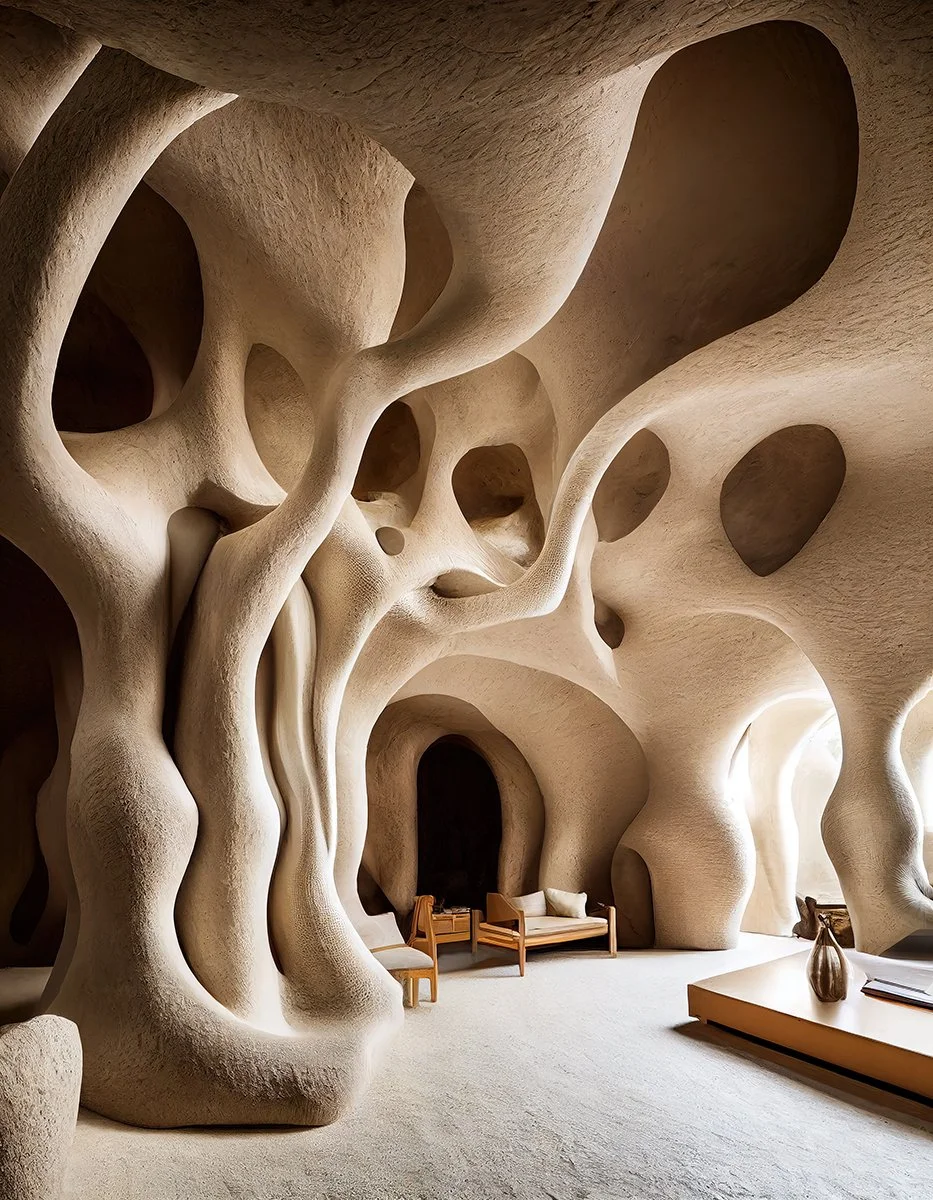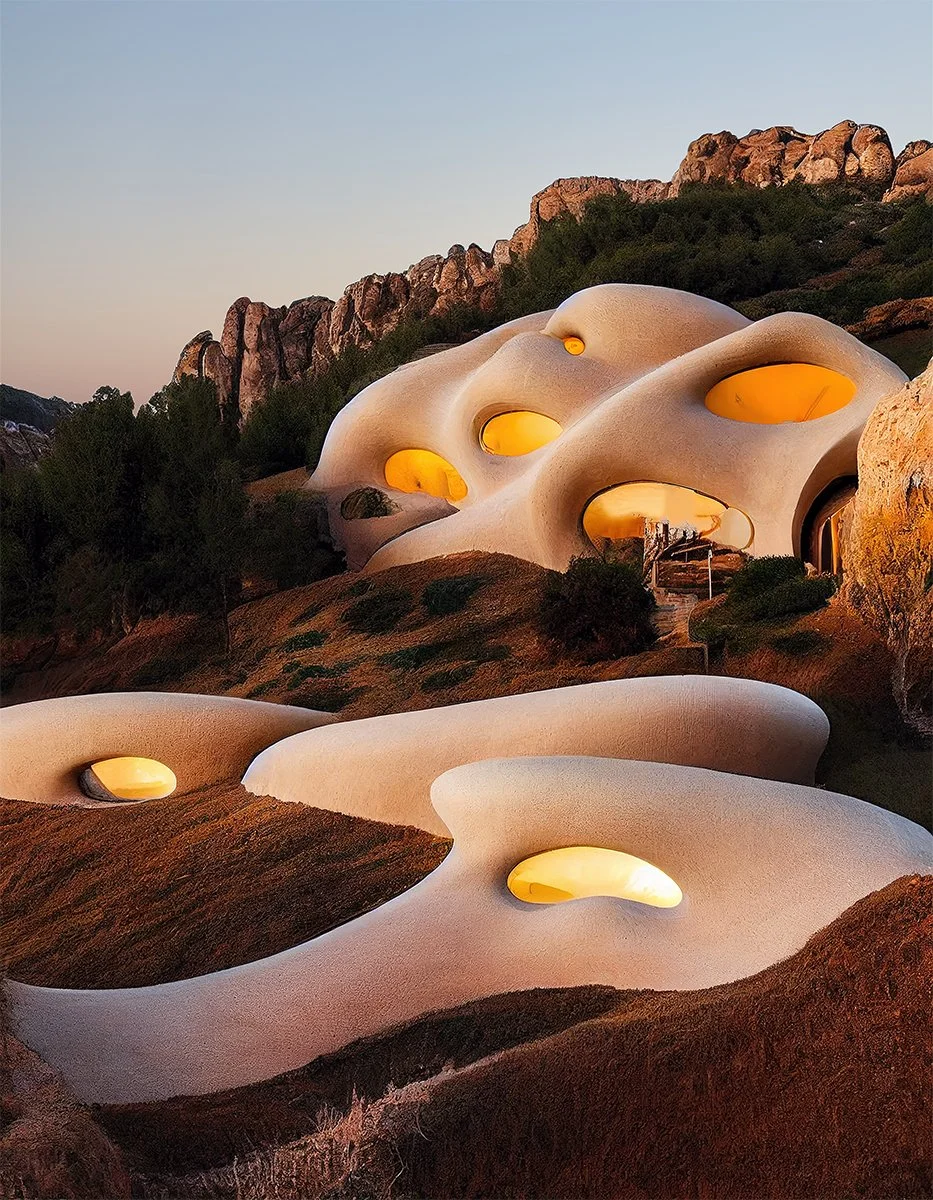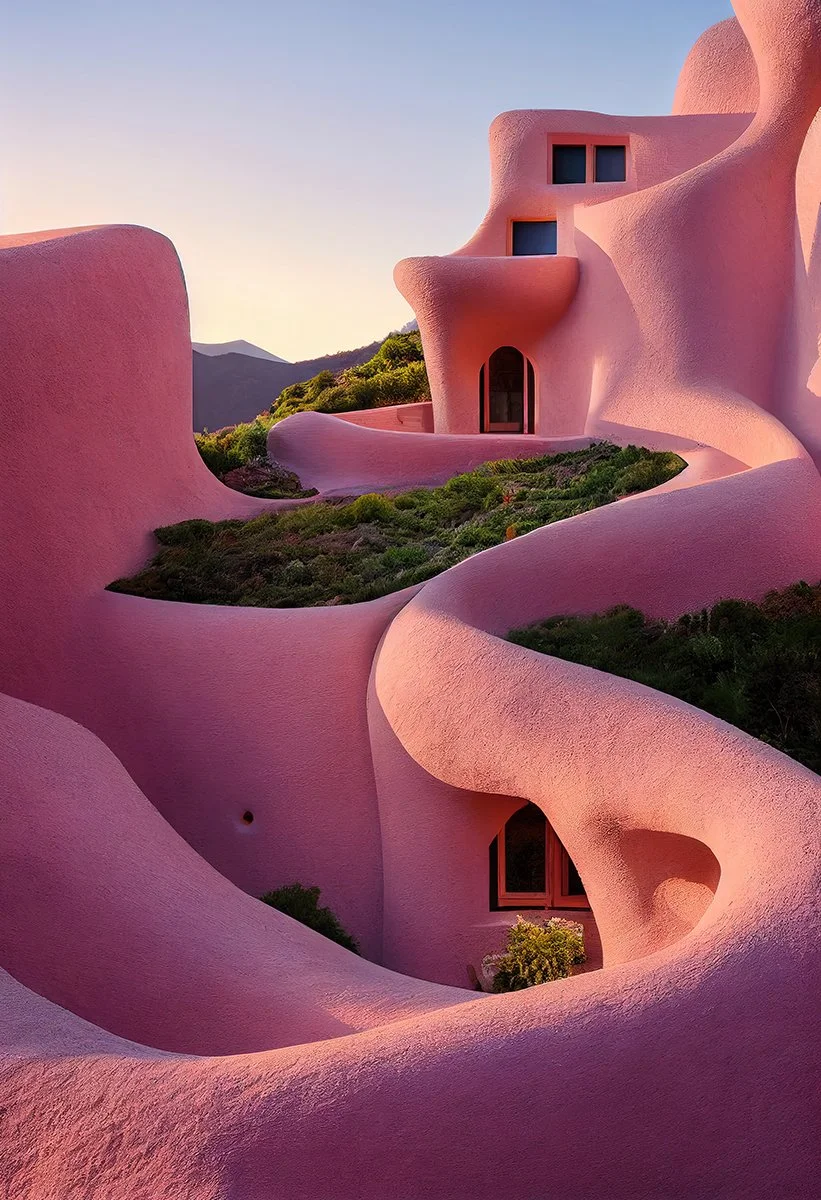Introducing Ari, an innovative artist from Barcelona, who masterfully employs AI to craft stunning architectural forms that are both captivating and thought-provoking. At the heart of her creative pursuits lies @gaudism.ai, a studio that seamlessly connects the legendary style of Gaudi with a dedicated mission to harmonize modern living with nature and wellbeing.
Gaudism's portfolio boasts a collection of visionary works that skillfully showcase living spaces transformed into sculptures, adorned with lush greenery, drenched in natural light, and crafted with the earthy textures of stone. Each piece exudes an aura of tranquility and reverence for nature, making a powerful statement in the fast-paced world we inhabit.
An advocate for mental health and self-care, Ari imbues her artworks with a sense of serenity and mindfulness, inviting viewers to take a step back and immerse themselves in the beauty of nature.
Meet Ari!
Can you tell us a little bit about yourself and how you got interested in AI art?
My background in art actually began from feeling like an outsider in a high school where it seemed as if things were either one extreme or the other, with no in-between or grey areas. My school was somewhat posh, and fashion, brands, and showing off were big at the time. I didn't have the nicest or trendiest clothes, but like any teenage girl, all I wanted was to fit in. From there, I started getting interested in fashion design, and very shortly after, I realized that what made me happy and where I truly belonged was in the realm of creation, in any form. I wasn't sure which artistic discipline to follow, so I pursued Fine Art in university. Every time I returned to Spain (I studied in the UK), I had the chance to connect with my grandfather and share this very special connection with art. He was essential to my background in art. From him, I learned that you don't need formal education to become a master; art arises as a primal inner response.
Later, having met other masters, this became even more apparent. With Gaudism, we encountered someone who likes to be referred to as an 'anarchitect.' This man has designed more than 300 organic spaces, and he's not an architect, he's an artist. His process for design in an industry as obedient (at times) as architecture doesn't follow a set of rules, and it's a beautiful experience.
All of this leads me to AI. We all have at least one brilliant idea in our lives, often more than one. External influences will always try to get in the way of an idea remaining an idea or materializing it. These influences can be the lack of the right technical skills, not having money, or not having time. AI came to us at the perfect time to visualize an idea, a step forward in eventually bringing it to life.
Who or what are your artistic inspirations, and how do they influence your work?
For us at Gaudism, our primary artistic inspiration is, of course, Gaudi, and by extension, nature. The way he looked at nature wasn't just for inspiration in forms, but also in terms of the energies found within nature and how a house or building can incorporate different systems and even breathe with fins, much like fish do. He was doing this at a time when technology meant something entirely different, and that's what we admire the most.
How do you approach the creative process when working with AI?
The creative process when working with AI is like an intense, fun, and even manic conversation. You can quickly become hyper-focused and a bit wild because the feedback time for results is incredibly fast. For us, the most effective technique is to be very organized in how we construct the prompts, carefully listing the main focus of the image and its context in terms of keywords. When we experience a creative block with AI, it's different from other mediums. For example, when I used to paint, I often had various ideas of what to paint but lacked the skills to execute them, leading to a block. With AI, the creative block doesn't really occur in terms of technique; the possibilities are truly endless.
How do you balance your work in AI art with other professional or personal pursuits?
At first, Gaudism started as a project for ourselves, just for fun. But now, it has become a mission, a studio, and a brand. So right now, I work full-time and also work on Gaudism full-time. What helps me the most is that I work on what I love, so designing a routine is much easier when you're passionate about what you do. Setting boundaries is also crucial. Each day, I organize my time and dedicate a certain number of hours to one task and other hours to another task. Often, things don't finish in the time you planned, and you have to learn to let go. It's essential to have self-respect for your mental health and enjoy the balance of completely stopping work at the same time every day to refresh and spend quality time with yourself, family, and loved ones.
Setting aside time to do nothing is also vital. We live in a noisy world, so lying down for 20 minutes a day to do nothing—no thinking, no focusing on your breath, no listening to music—just doing absolutely nothing has helped me a lot.
How has working with AI in art influenced your mental and emotional wellbeing?
It's very satisfying to see what you're imagining come to life so quickly. But it can also be stressful because you can be looking at 100 results in one afternoon. Creating daily content for IG can get crazy, especially when you have so many options and results. That's something to strategize into the routine to make it flow as easily and concisely as possible. This is where boundaries become crucial in our day-to-day lives because you could easily spend three hours creating AI images, getting into almost a vicious cycle, thinking you could achieve a better and better result each time. Boundaries!!!
In your opinion, how does AI redefine the concept of creativity and artistic agency, and how do you see it impacting the future of art?
I think AI gives us a new power, much like how Photoshop empowered many people who learned how to use it to visualize ideas. AI is extending this power to even more people because learning how to use it at a basic level is accessible for most of the population with access to technology. Of course, like any new technology, it comes with risks. The ethical terms in which AI systems are trained must be controlled, and certain things must be protected. But, as I mentioned, it gives power to many people, and then it's up to those people to use this power for good or ill. So the future really depends.
What role do you think AI art can play in highlighting social issues, and have you incorporated any such themes in your work?
AI art can play the same roles as any other form of art in highlighting social issues. In our case, the focus is on wellbeing and showcasing a different way of living, one that is more connected to what is truly essential, like primitivism and ethereal living. We aim to disconnect from what is making us mentally and physically sick and separated from these concepts.
If you could collaborate with any artist, living or not, who would it be and why?
We would love to collaborate with any of these artists because we feel that we share the same motives that drive us to create: Gaudi, Noguchi, Javier Senosiain, Roth Architecture, and Neri Oxman.
What advice or encouragement would you give to aspiring women who are interested in pursuing AI art?
Go crazy! Inform yourself about how each tool works. Each system speaks a language, and it's all about syntax and how we communicate with the AI. So let's do our homework, study the best ways to use this new tool, and from there, really anything is possible! We can visualize anything we want, use it as a tool for manifesting, or even use it as a tool to design the life and routines we desire.
For more of Ari’s incredible work, make sure to visit her Instagram account: @gaudism.ai










